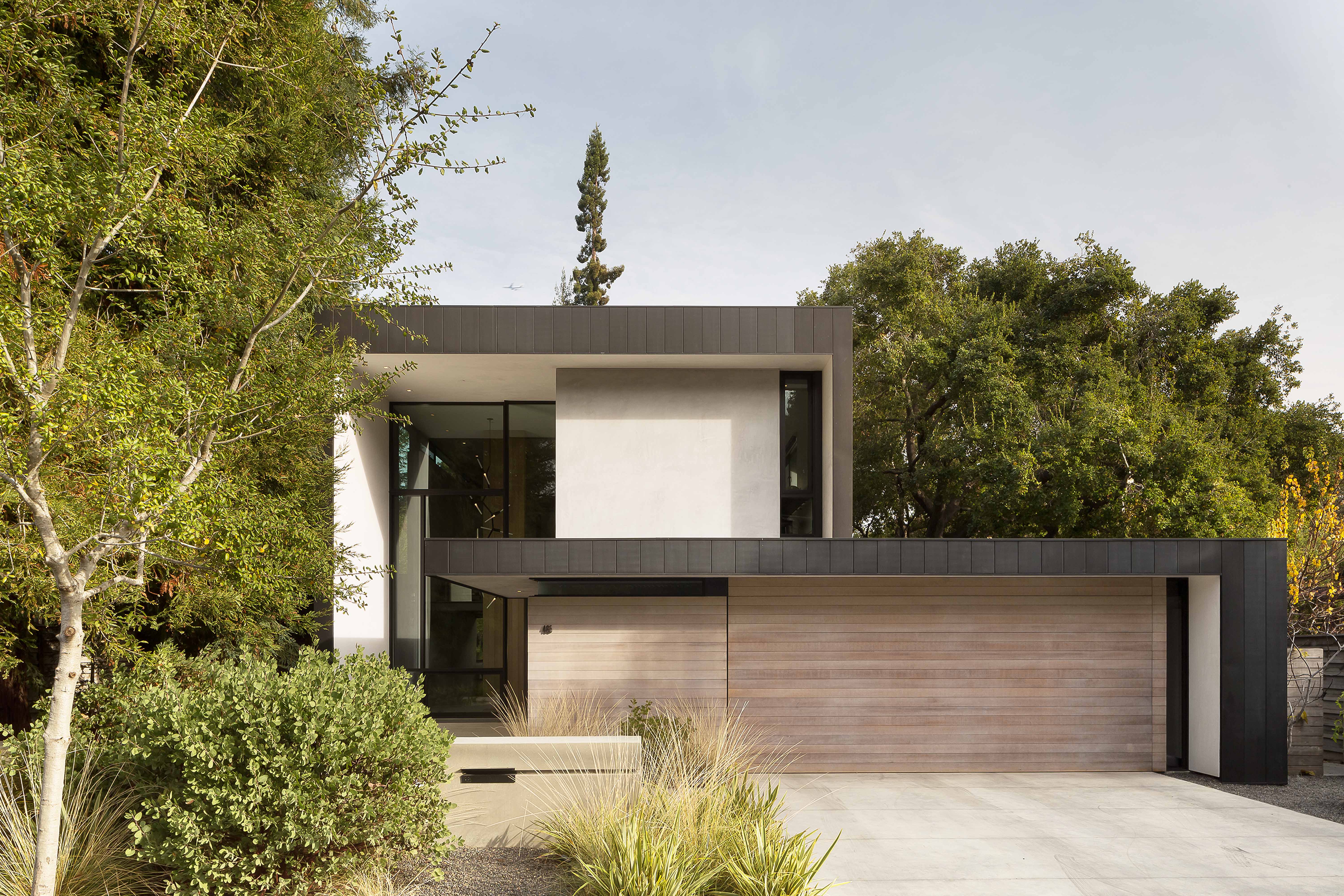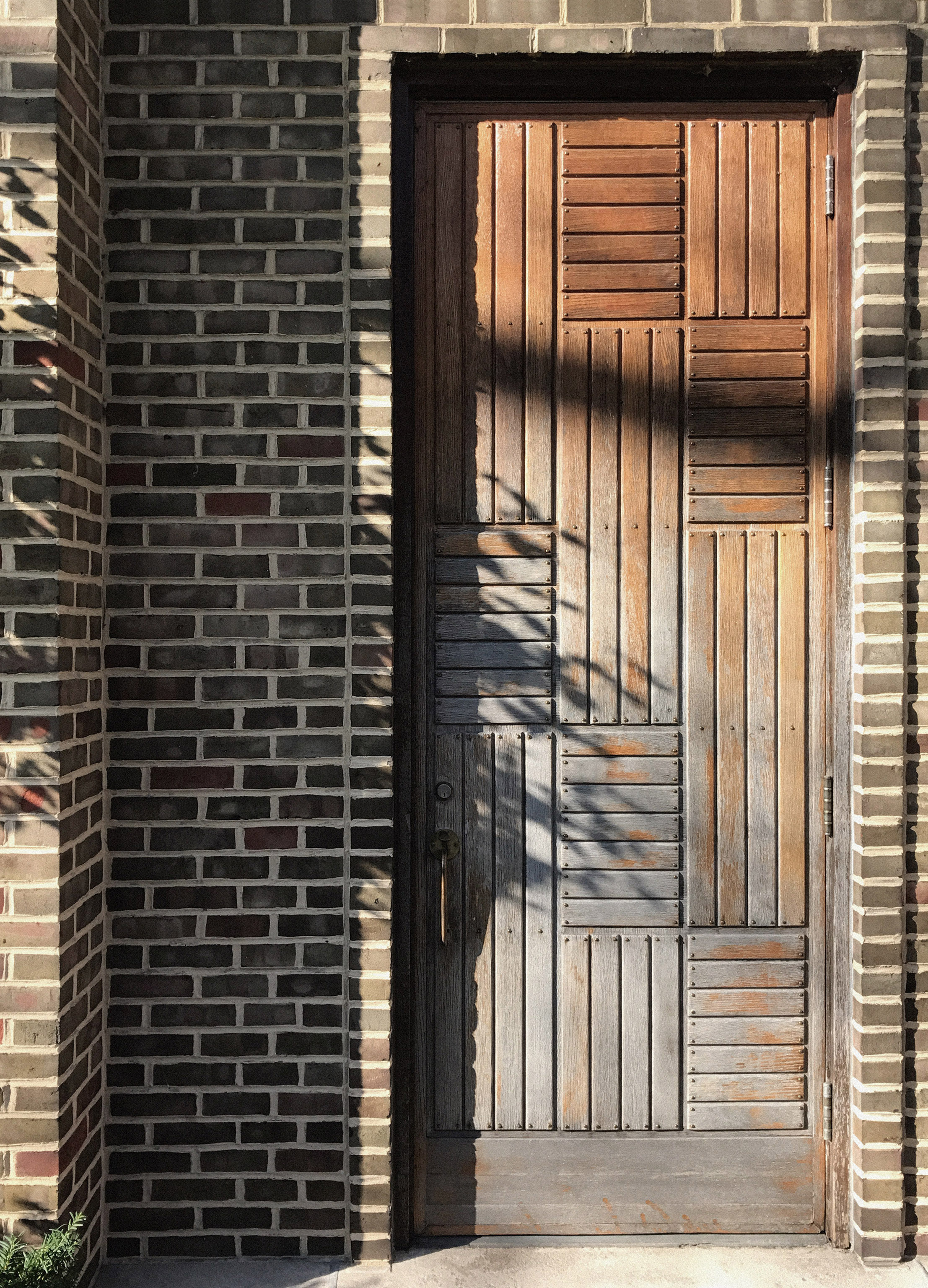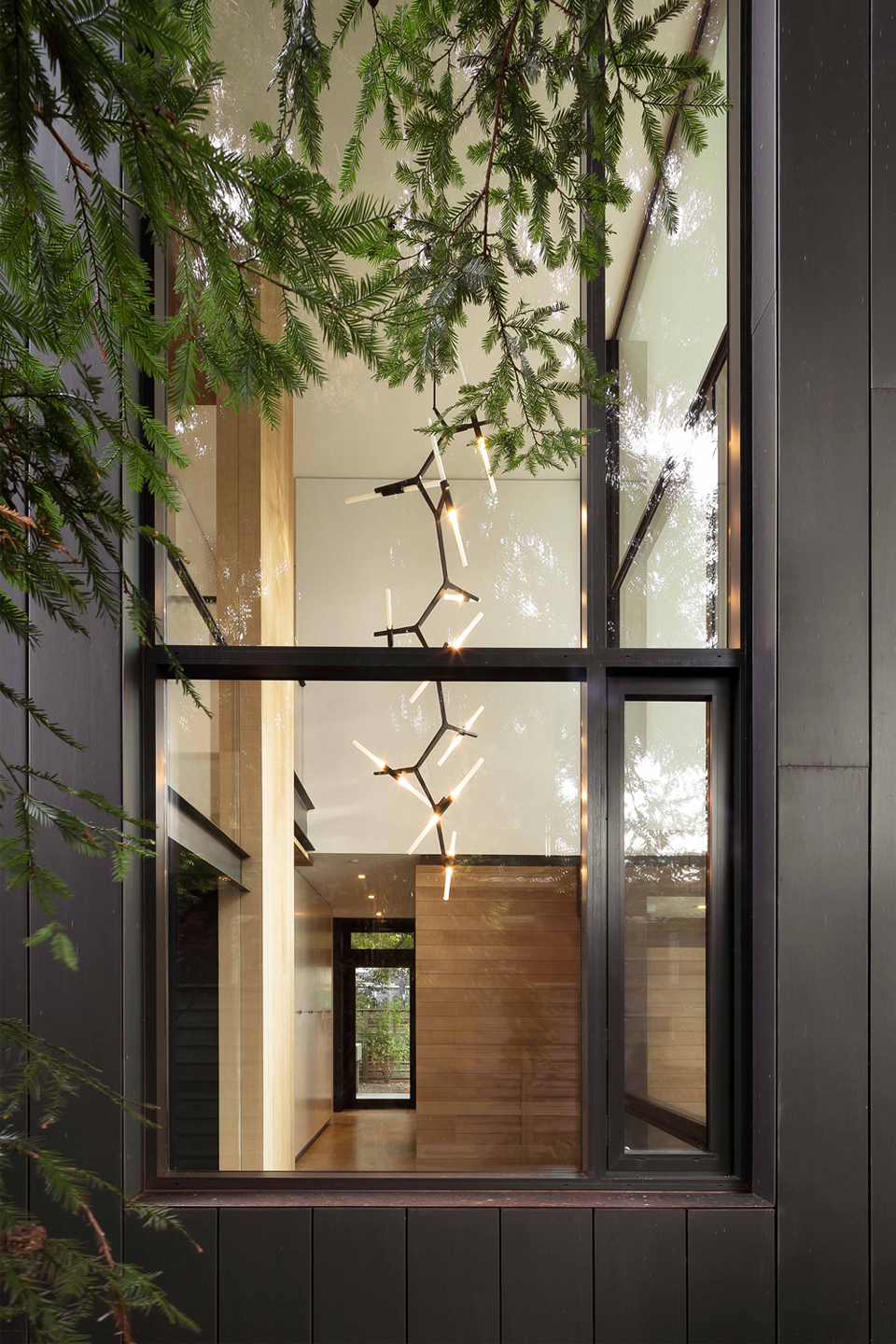Adam Rouse is both a practicing architect, at renowned San Francisco firm Aidlin Darling, and an architectural photographer. We sat down with him to discuss his approach to both disciplines and how one might inform the other
Interview by Jack Byron
Photography by Adam Rouse

TREE HOUSE- AIDLIN DARLING DESIGN
Which interest came first: the architecture or the photography?
I think they have always been coupled together, not been separate things. I grew up in Ohio close to the urban center of Cincinnati. It isn't that big of a city, but we would go downtown to what were skyscrapers to us as kids. My dad gave us a little film point and shoot camera and I was always taking photos. I was enamored by the height of the things and the presence of the buildings. I was trying to capture it or keep it for later.
This was super low tech technology. Looking through a little viewfinder you shoot something and get the thrill of getting it developed at your local drugstore . You got your prints back and they were something else entirely than you thought you took a photo of, almost like a whole different world. That process was really fundamental - exploring the architecture and photography mind that I was developing.
I always was interested in exploring my environment with a lens...I was taking photos of not just the building but details like a worn step or handle

SLATE HOUSE, MARYLAND - ZIGER SNEAD ARCHITECTS
I took both studies in school; I did architecture classes, drawing classes, photography classes, and ultimately went into architecture because I wanted to create and build these things versus just take photos of them. I had no idea architectural photography was even a profession at that point, and it is such a unique niche industry in itself, where I went to school in Ohio and even here in California and New York.
I always was interested in exploring my environment with a lens every time I got a chance to. When we would travel for school, I was taking photos of not just the full building but the details and the small things, like a worn step or handle.


I think one of the trips I remember most was going to Columbus, Indiana. It's a kind of design mecca. A forward-thinking buisness owner at one of the main companies in the town had the idea of subsidizing the hiring of renowned architects to make buildings of note that would create a wonderful civic fabric in a different way - not your neo-colonial fabric but this new kind of progressive fabric. There's Eliel and Eero Saarinen buildings, I think Robert Venturi did a building and others. I remember taking a lot of photos of the details and the light play and the way the Eliel Saarinen church was like a piece of Finland in Indiana, in regard to the design ethos and the detailing, that you could go visit.

CHURCH: COLUMBUS, INDIANA - SAARINEN
I remember all of the screw heads on the front door of the church - every single one of them was vertical and there were thousands of screw heads. Looking at that you understand that getting closer actually told the story of the whole even more. You zoom in on a detail and it tells this idea of enlightenment and verticality. It was the trip that stands out in my mind where I really started to want to take more photos and document architecture more succinctly.


What is it about architecture that you seek to capture in photography?
I've always been interested in the things that you wouldn't necessarily see in the final image. In each space I try to capture that environmental feeling that you can't necessarily get with just looking at a photo. For example, the five senses or the things that you're feeling or sensing that's special about the place. There's the light on form which you're exposing in regard to the sensor or the film, but I try to capture the feeling of the space, whether it's dark and moody or, like in a desert shoot, almost bleach bright white. Everything is not over-exposed but it feels like that to your eyes. Your pupils are so small just to take in detail, versus some place up in northern California in the Redwoods in this wonderful dark wooden volume in the forest, your pupils are very wide, everything's very rich and you feel a coolness to it.

Or olfactory or auditory elements of a space - if you see crushed gravel on the ground in front of a wood deck you can imagine yourself walking up to that door with the crunching sound and then going onto the wood deck and the hollow sound of the wood. I'm trying to create almost a cinematic effect so it captures a mood, it captures the environment as best as possible, and is true to that environment.
I shot a house in Palo Alto that was in a Redwood grove. The light and the smell of the needles was so present in the foyer that I went out into the Redwood grove and shot back through it into the house so that the Redwoods converged in from the sides of the frames and you could see the needles on the sill. Every time I look at the image I smell Redwoods.
I'm trying to create almost a cinematic effect so it captures a mood, it captures the environment as best as possible, and is true to that environment.

TREE HOUSE- AIDLIN DARLING DESIGN
Similarly, with the desert house outside of Palm Desert I took a wide shot of the house and the pinyon pines as you come into the property. They look like normal pine trees but they are the most stiff trees because of the weather and winds they have to deal with. If you brush into one, it'll scrape you. They push back.

HIGH DESERT RETREAT, PALM DESERT- AIDLIN DARLING DESIGN
I was trying to bring the pinyon tree into the frame as much as the architecture because the house was built around these ancient pinyon pines that were in dialogue with the house, and they also had a very specific sap smell to them. The robustness of those trees was directly evocative of the robustness of what the house wanted to be, what the house was projecting to nature - its concrete walls and durable materials. It's this clean lined sentinel in the landscape that is incredibly dynamic and harsh.

Certainly, what I get from your photographs is very much a sensorial element that I don't often see in a lot of other architectural photography. There seems to be a central concern in your work with evoking context. Do you think as an architect that an architect's mindfulness of context is something you have brought to architectural photography or is that something that just naturally occurs as you're shooting a building?
I think without question the former. In architecture I was trained to build within the context of the site. I had always started to design with the idea that this building or this project should be so integral to the place that if you moved it into a different climate or even a hundred yards down the way it would not make sense anymore because it's so tied to the specific location.

When I'm photographing a project for a client, I try to get into the mindset of how they've sited the building, and what they were thinking of. I have that dialogue with the architect prior so we can collaborate on what type of approach or feeling they want for the shots. Also what they were thinking as part of the larger story of the creation of the project like tucking the house next to the Redwoods so that when you open the windows the smell of the Redwoods would come in through the window. Then you can focus on that story photographically and try to have that relationship come through in the photos.

SUNRISE RESIDENCE, SONOMA - FELDMAN ARCHITECTS

Do you find yourself imagining photographic angles when you're designing a project?
Yes - because of 3D software and the way that you can move and spin around the model now - now it is the way that you present to clients. You think through cinematography.
You're creating an episodic way of presenting the house to the client – a narrative you're telling them through the way that you envision the spaces will unfold. For example the narrative that the client will experience in the way they arrive at the house. Is it through the front door? Is it the way the guests arrive, through different courtyards? You tell those stories through walk-throughs, a 3D model or renderings, but essentially you're doing the same thing I would be doing at the end of a project as a photographer. In taking photos you're setting up these compelling vignettes or episodes as you move through the house.

From having the architectural photography mind I'm setting up the shots in a very curated way. I have a style in the way that things are framed. The way that I design and think about photographic angles and projects that I'm designing are inseparable. I think it was a little less the case in the early days when we were just doing the plans, sections, elevations, because you would actually construct perspectives with all your leading lines and your vanishing points on a big piece of paper. You couldn't just walk through a model and experience it real time.
Even back in those days I would take a similar approach but it would be with physical models. You'd build the physical model and I would get into the model with a camera and light it from different angles with a desk lamp or something. I would try to take more evocative photos of the feel of the building, to help the studio or clients get a feel of what we were trying to do – the sensorial approach to it.
Now the rendering engines and software have become so good that you can almost walk through a model in a photorealistic way. It is amazing to think even five years ago about doing something like that. It becomes about representation versus reality because in the end the renderings and the drawings are representations of architecture. Are things becoming too real too quickly in the design process? I've always thought that as an architect it is the final built architecture that I'm trying to get to. The architecture that's built is the real thing.

ASPEN RESIDENCE, COLORADO - RO ROCKETT DESIGN
Those are the wonderful surprises that you get as a photographer. Like in the twilight hours where the building's outside is soft...the interior is starting to glow, but hasn't broken the glass plane yet to where it's completely see-through. You get these wonderful reflections of the landscape, of trees...
There's so many surprises when the end building is finished with shadow play, light play, the way that reflections work off the glass that you never expect. That's the thing that I'm always excited about getting to and capturing in photography because they're not necessarily things that you can explain, render or show to a client or to yourself.
Those are the wonderful surprises that you get as a photographer. Like in the twilight hours, the crepuscular light hours, where the building's outside is soft because the sun's gone down but there's still light in the sky. The building interior is starting to glow, but it hasn't broken the glass plane yet to where it's completely see-through. You get these wonderful reflections of the landscape, of trees that you're also seeing through to the living room, the dining table and all the details. That's one of my favorite times to shoot - it's a very magical time, but alas, it's a short period of time. Some of my favorite times of being in buildings is during that dawn twilight and the dusk twilight.

Have your techniques and approach to photographing architecture developed or changed over time?
Yes – with interchangeable lenses. My first true architectural camera was a variable with the lines corrected so you're not getting fish eye, you're getting straight lines. That was an 11 to 24 millimeter lens that I took to Europe with me in 2008. It was my first foray into European architecture and I just cranked that thing open the whole time. I was enamored with how much you could capture, but then over time you get people or circular objects out in the periphery of the frame and they start to distort and pull away like you're going into warp speed. That never felt right to me.
The trickiest part is when there's circular objects that you're trying to keep true to their actual shape in real life. I got into that pretty specifically doing photographs for Louis Poulsen lights at the Nordic Museum in Seattle. They have a very specific photography proforma for their lights - one of them is no distortion, to the point where you have to do post-correction.

The widest that I use is a 24 millimeter lens unless other circumstances allow me to go bigger. But one of the main reasons is it feels odd to me to have pure spherical objects distort in the frames, if there's people that start to get stretched it's this uncanny odd humanoid thing in the frame. My eye always goes to it and I get distracted.
With equipment now I'm shooting in full frame with the Fuji film system. All interchangeable lenses, I try to stay 24 as the widest and then go in and go in and go in. When you're standing in the same place you just swap lenses out and start exploring. It's really nice going from a larger contextual shot, putting on a 100, 200 millimeter lens, and then just scanning the building, zooming in on details and these beautiful little moments that are hidden within the larger overall shot, and being very organic about what you're capturing.


Do you think architectural photography has become any less of a niche discipline recently?
I think that it is never going to necessarily change as a niche market because it's so specialized and it takes such a special eye to crack that code or get in and get to that certain gravitas of a photo. A specialized brain that can unlock the approach and capture the understanding of architecture - why the architecture that you're photographing is special and creating some documentation of that, translating it to the viewer. Certainly you can explain leading lines, proportion, scale and all of these things setting up a photo, but there's just some photos that have this magic and you can't put your finger on it. It's amazing because of all the things I just mentioned, but it just sings.

I think good architectural photographers are the people who are documenting the seminal works of architecture out there, the canon of work that will live beyond this decade or this generation or this time in architecture. The Ezra Stollers of the world.
Because of digital photography a lot more people are able to get into photographing architecture and interiors. There are more Shelter magazine type mediums, and different approaches to interiors. With all of the different post-processing filters, effects and ways that you can shift the mood of a photo from the raw file - you can take it someplace else completely.

Is there a particular building that you'd like to shoot and a favorite that you have shot?
The building that I'd love to shoot was also one that I had shot, but not in its open state. When I went to Europe in 2008 as I mentioned, with my first architectural lens, my brother was a doctor living in Germany at the time and I took him on an architectural tour. He was getting a kick out of it because we were jumping fences and standing in the middle of an operating train yard to see the Herzog and de Meuron signal box in Basel. I don't think they would allow anything like that to happen now.

SIGNAL BOX, BASEL SWITZERLAND - HERZOG AND DE MEURON
During that trip we went to the thermal baths by Peter Zumthor. It was May and the baths were closed for a month for a full cleaning. It was closed to guests but you could still walk up to it and walk all around it.

THE THERME VALS, GRAUBÜNDEN SWITZERLAND - PETER ZUMTHOR

I was still blown away by it - the material presence, its presence in the landscape, but all of the pools were drained and there was nobody around. I jumped the little beautiful bronze guardrail and was walking around the bottom of the pool basins that should have been filled with water. It was a surreal experience, almost this post-apocalyptic feeling.

I went up to a window and cupped my hand so I could see inside. You have dark walls and brass doors and concrete form-tie caps that were just glowing because of the sunlight coming in. Then there were pieces of furniture with white cloths over them. It looked like a Stanley Kubrick meets Peter Zumthor collaboration. I've tried to figure out how to publish some or just get them out there because they were so unique.


It left me wanting more so I would love to go back and be allowed to wander around on the interior with it as it should be, shoot the light, the water and the feeling with all the pools filled up. But to have seen it in that weird shuttered state was a memorable experience.
